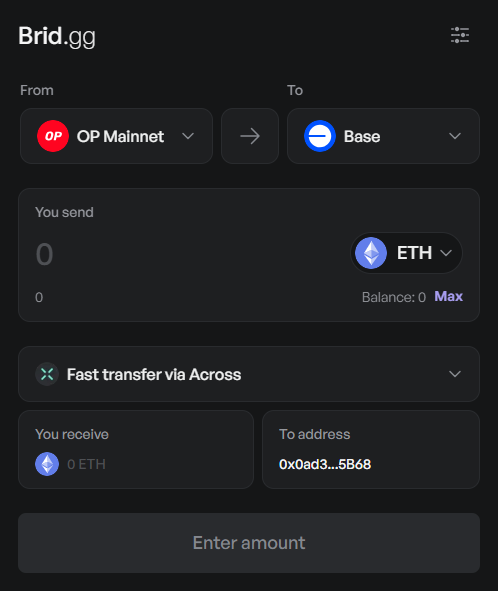Summary
Users are increasingly bridging to World Chain to tap into its early-stage DeFi experiments and identity-focused infrastructure. From staking primitives to low-cap token launches, World Chain is slowly becoming a hub for human-verified activity.
Since its OP Stack-based mainnet launch, World Chain has integrated with several bridges and wallets. A few DEXs have gone live, TVL sits around $2.1 million, and community attention is growing, especially after the World ID and Orb verification flow gained traction in late 2024.
In this guide, we’ll walk you through the easiest way to bridge to World Chain using Superbridge Core, and cover alternative platforms you can use depending on your preferred network.
Prerequisites
Before bridging, make sure:
- You have an EVM-compatible wallet like MetaMask.
- The World Chain network is added to your wallet.
- You hold $WLD tokens to pay the 0.03 WLD gas fee on World Chain.
- You’ve selected a bridge that supports the source network you’re coming from (like Ethereum, Base, Optimism, etc.).
Step-by-Step Guide: Bridge to World Chain via Superbridge Core
Superbridge Core is the default option for most users. It’s tightly integrated with World Chain, thanks to its OP Stack compatibility, and offers a clean, beginner-friendly UI with decent security assurances.
Actionable Tips
- If you’re bridging from Base or Blast, expect occasional delays depending on congestion. Bridging during off-peak hours (UTC 02:00–06:00) typically results in faster confirmations.
- Superbridge Core sometimes requires manual token imports after bridging. If your asset doesn’t appear, use a blockchain explorer to find the contract address, then import it into MetaMask.
Alternative Platforms
If you ever need another way to bridge to World Chain, these two platforms offer broader network support or added customization for specific token types:
Across Protocol
Across Protocol supports over 15 EVM networks and offers intent-based bridging. It’s useful if you’re bridging from chains like Blast or Arbitrum. Fees vary depending on the chain, so check specifics before submitting. The UI may feel slightly advanced for first-time users, but the bridging process is efficient once set up.
Brid.gg
Brid.gg is a no-fee bridge (you only pay gas) that connects Ethereum and OP-based chains. It includes an Expert Mode for advanced users and supports custom routes and force transactions. Its support for World Chain is growing, but it mainly covers ETH and BASE as origin chains.
Security Considerations:
- When bridging to World Chain, always ensure the destination network is correctly set. Accidentally selecting another OP Stack chain like Base or Optimism may lead to transaction errors or misrouted assets.
- Double-check the token type and amount before confirming the transfer, and avoid manually typing wallet addresses.
- If you’re bridging from high-latency networks like Ethereum or Blast, expect occasional delays; especially during peak congestion times.
- Verify that you have enough WLD in your wallet to cover post-bridge gas fees. Stick to official or reputable bridges like Superbridge Core, Across Protocol, or Brid.gg, and always double-check URLs (make sure they use HTTPS) to avoid phishing traps.
Bottom Line
World Chain may still be in its early innings, but its human-centric design and growing interoperability are attracting attention from developers and traders alike. Learning how to bridge to World Chain today puts you in a good position to explore what’s ahead, whether that’s testing new dApps, collecting early rewards, or simply holding assets in a bot-resistant environment.
FAQs
1. Can I use MetaMask to bridge to World Chain?
Yes, MetaMask is compatible. Just make sure you’ve added the World Chain network before initiating the bridge.
2. What tokens can I bridge via Superbridge Core?
Mostly ETH and stablecoins like USDC, but supported tokens depend on the origin chain.
3. How long does it take to bridge to World Chain?
On Superbridge Core, transfers usually complete within 1–5 minutes. If network congestion is high, it may take longer.
4. Do I need to verify my identity to bridge to World Chain?
No, bridging itself does not require identity verification. However, if you’re planning to interact with apps using World ID or take part in Proof of Human–enabled dApps, you’ll eventually need to complete World Chain’s human verification process using the Orb.
5. What should I do if my bridged funds don’t show up?
First, check the transaction hash on both the source and destination block explorers. If the transaction is confirmed but funds are missing, refresh your wallet or reimport the token contract. If issues persist, contact the bridge’s support or check their status page for delays.





